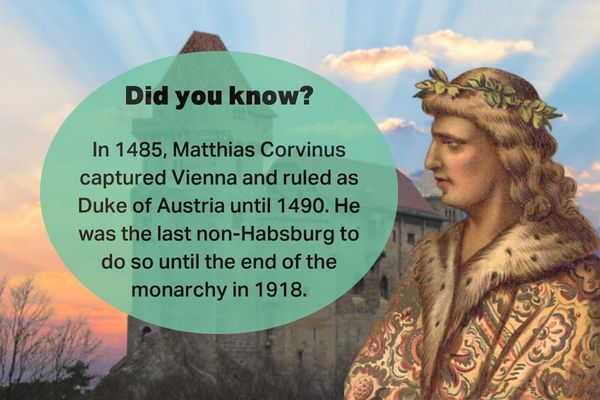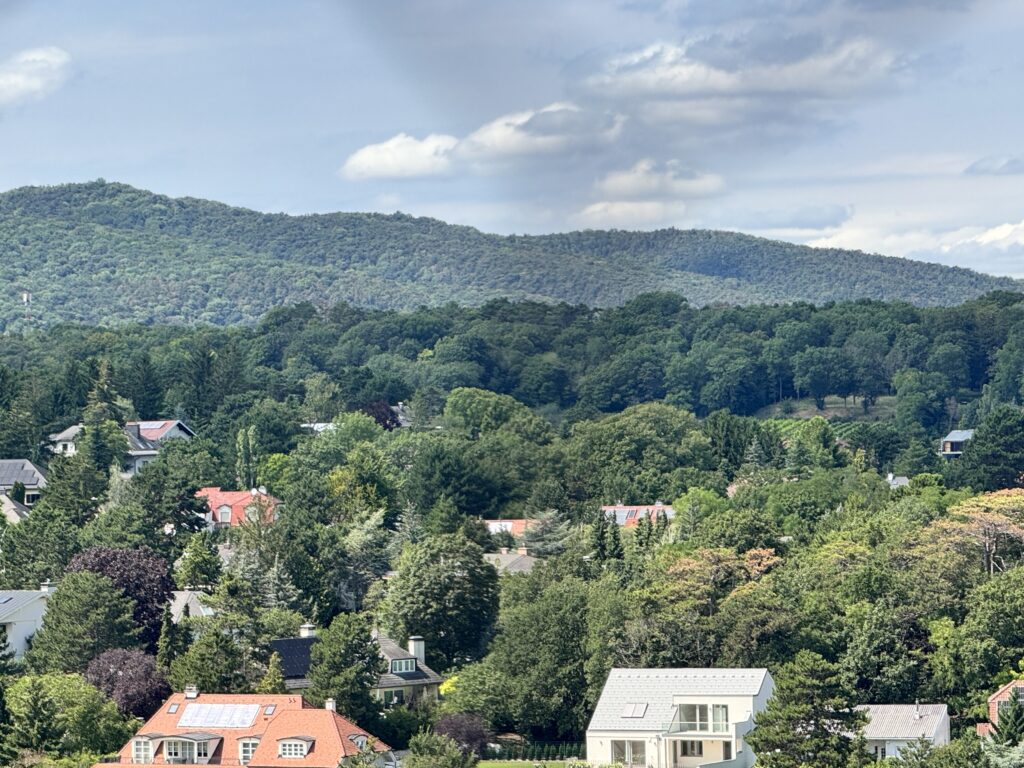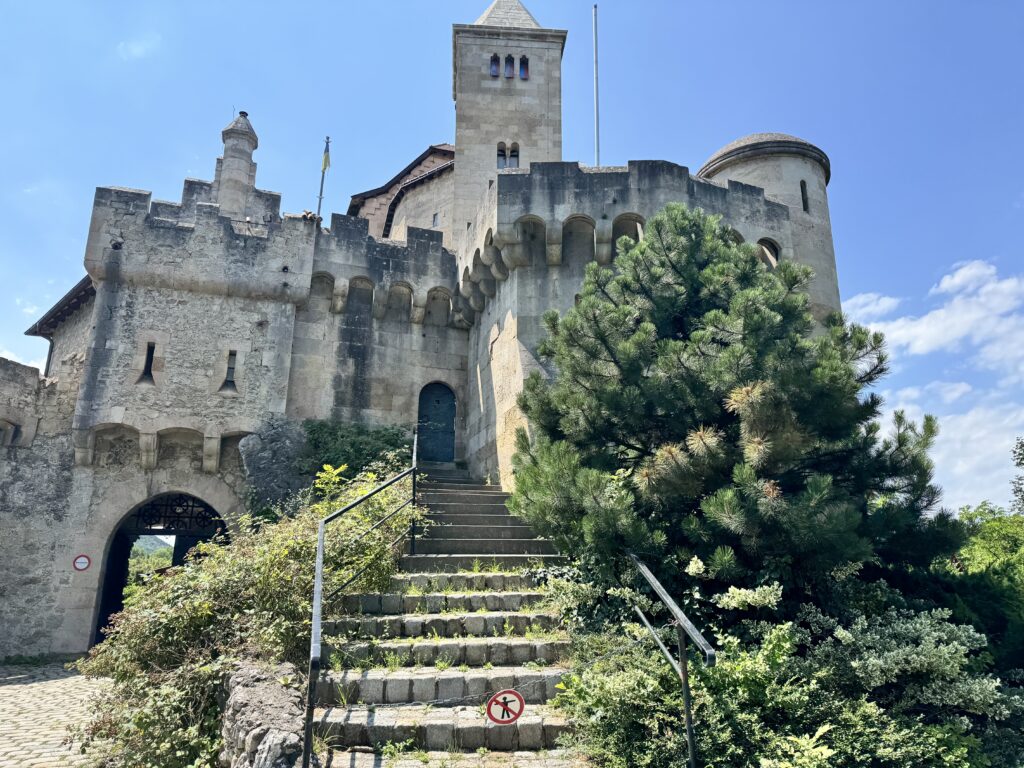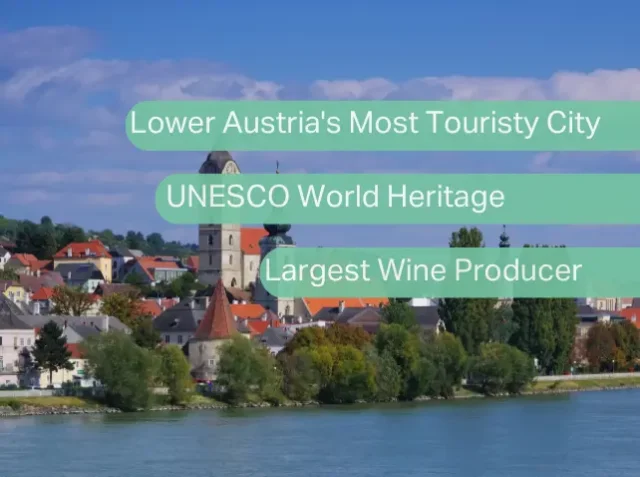Discover the hidden gems of Austria’s rich history at Burg Lichtenstein, a stunning medieval castle near Vienna. Whether you're passionate about history, architecture, or cinematic landscapes, this castle offers a unique experience for all. Dive into fascinating stories of legendary figures and explore how Burg Lichtenstein shaped Austria’s past—then plan your visit today!

Book
Austria by Public Transport
Discover Austria like never before with “Austria by Public Transport.” This book is your ultimate guide to exploring the beauty of Austria easily and affordably. Get your copy today and start your adventure!
Burg Lichtenstein is a wonderful place for people who love history and nature. This unique castle, which gave its name to the country of Liechtenstein, is a true gem. It’s close to Vienna, and you can easily reach it by public transport.
Location of Burg Lichtenstein
The castle is in Maria Enzersdorf, a charming town with about 9,000 people. The town lies on the Thermenlinie, which is famous for its thermal springs. Popular spa towns like Baden, Bad Vöslau, Bad Fischau, and Oberlaa in Vienna are nearby. A long time ago, the Celts and Romans used the springs and grew grapes. These vineyards still decorate the hills today.
Burg Liechtenstein
Captured by: noe-3d.at on Sketchfab
Explore the 3D model here: Burg Liechtenstein 3D Model
Powered by: Sketchfab
The town grew slowly, building churches and monasteries to unify the land under the Habsburgs. However, in the 16th century, Turkish invasions destroyed the town, and the castle burned down. The area was ruined again in 1683 because of another Turkish invasion. The castle stayed in ruins for almost 200 years, but in the early 19th century, Prince Johann I of Liechtenstein started rebuilding it.
Burg Liechtenstein
Captured with: Matterport Pro2
Shared by: Virtual Real Estate Knapp GmbH
Explore the 3D model here: Burg Liechtenstein 3D Tour
Powered by: Matterport
In 1938, the Nazis added the town to Vienna, but in 1954 it became independent again. In 1955, Russian troops left after Austria declared neutrality.

Support
Each post on our site takes 10 to 20 hours to prepare, and we’re a small, independent project. We really need your support to keep things going! Your help means everything to us. Please consider supporting us, so we can keep bringing you awesome content.
Thanks for being awesome!
A Historical Treasure
Burg Lichtenstein sits on Kalenderberg Hill, which is about 300 meters above sea level. It was part of the Liechtenstein family’s landscape park, but now only a few romantic ruins remain. The castle stands in the Vienna Woods, a UNESCO site.

People say a wooden castle stood here in the 11th century. In the 12th century, Hugo I of Liechtenstein built the stone castle. He probably received the land from the Babenbergs, and the castle became part of the defense system. After building the castle, Hugo became known as Hugo von Liechtenstein.

By 1330, the castle no longer belonged to the Liechtenstein family. Nobody knows if they lost the castle or sold it. In 1480, King Matthias Corvinus captured the castle, ruling the area until 1490.
The castle changed hands many times and was destroyed during the Turkish invasions of 1529 and 1683.

In 1808, Prince Johann I of Liechtenstein bought the castle back. He started a big renovation and planted trees on the hills, which were bare. He also built romantic ruins, which were fashionable at that time. Prince Johann II finished the renovations in 1903.

During World War II, the castle was damaged in battle and occupied by Soviet troops for almost 10 years. Scouts used the castle after the war, but now the Liechtenstein family owns it.


Subscribe
Explore Vienna like a local and discover nearby treasures.
Join our mailing list!
Visiting Burg Lichtenstein
Today, the castle is open all year, but visitors must check the opening hours. You can visit the castle only with a guide. For more information, check the official website here.

Recommendation for Visitors
During the tour, you can explore many beautiful rooms, which will transport you back in time. However, we recommend taking an extended tour, because the standard tour does not include the castle tower. You can find more details on special tours here.
Make the most of your experience by getting the NÖ-Card first! With this card, you’ll enjoy a special price and guided entry, ensuring you don’t miss a thing at this incredible historic site.
At the end of the tour, it’s customary to leave a tip for your guide, so having some small change on hand is a good idea!
If you’re up for more adventure, why not take a short trip to the beautiful spa town of Baden, just nearby? It’s the perfect way to unwind after exploring Burg Lichtenstein!
Gallery
Although photography is not allowed inside the castle, I highly recommend visiting as the interiors transport you back to medieval times. It’s a unique experience that lets you feel the atmosphere of past centuries.




Fascinating Facts
About Burg Lichtenstein
and Its Historical Figures
- Johann I Joseph, Prince of Liechtenstein, was one of Austria’s leading military commanders. He fought in major battles like Austerlitz, Aspern, and Wagram, and played a key role in defending Vienna from the French. He was also responsible for restoring Burg Lichtenstein in the 19th century, preserving the family’s heritage.
- Carl Gangolf Kayser, a notable Austrian architect, led the restoration of Burg Lichtenstein. He is also famous for constructing Kreuzenstein Castle, both of which are celebrated as remarkable examples of romantic medieval-style castles.
- In 1818, Prince Johann I of Liechtenstein gave the Principality of Liechtenstein its first constitution. As the ruler who restored Burg Lichtenstein, he left a significant mark both politically and architecturally.
- Burg Lichtenstein has been featured in several renowned productions, including The Pillars of the Earth, a series set in medieval England, and The Three Musketeers, a cult classic. The castle’s medieval architecture made it the perfect filming location.
- Before the establishment of the Vatican in 1929, Prince Johann II of Liechtenstein negotiated with the Pope to establish the papal seat in Liechtenstein Country. Although his brother opposed the idea, this event reflects the strong ties between the Liechtenstein family and the Catholic Church.
Join Our Vibrant Community
Are you passionate about discovering the hidden gems of Vienna and its surroundings? Follow us on social media and become part of our enthusiastic community!
Why Follow Us?
- Exclusive Content: Each post is a labor of love, taking between 10-30 hours to create. We share breathtaking photos, captivating stories, and invaluable tips.
- Stay Updated: Never miss out on exciting events, new attractions, and must-visit spots in and around Vienna.
- Support Independent Projects: We are an independent project, and your follows help us cover the costs of running this page. Your support is crucial!
Your Support Matters!
Every follow, like, and share directly supports our work. It helps us continue bringing you the best content and ensures we can keep this site running. By following us, you’re not just staying informed – you’re helping us grow and thrive.
Don’t miss out! Click the links above and start following us today. We can’t wait to connect with you!





